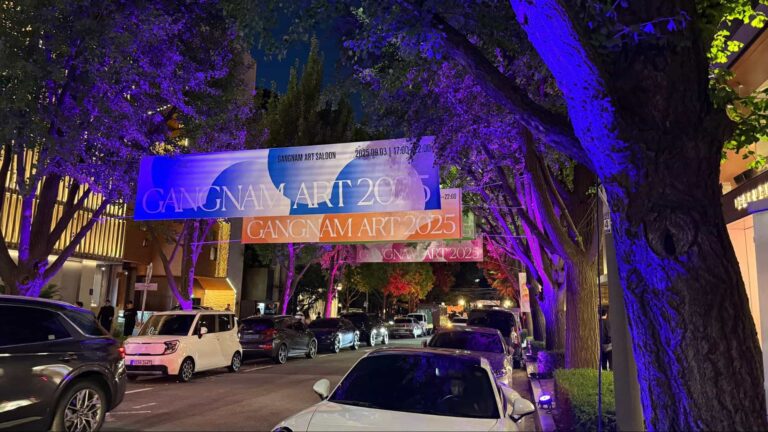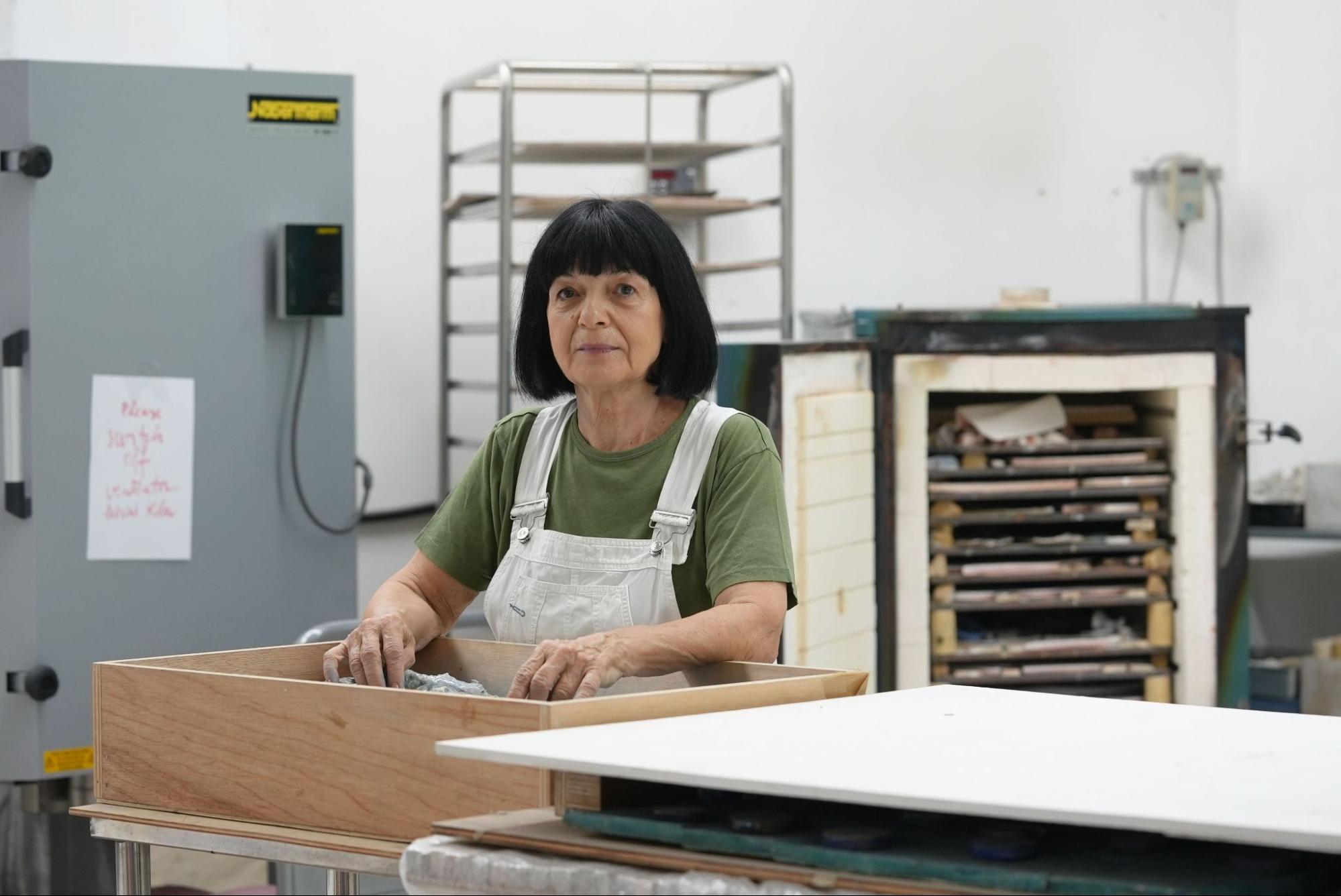
A large metal ring lies on the floor, its hollowed middle like a portal to the unknown. Along its rim, objects adhere like barnacles to a shipwreck, beckoning the eye to take a closer look. One may be forgiven for getting overwhelmed: each vessel in this assemblage is complicated and tangled with some other meticulously created ceramic curio, from decorated shards and mosaic tiles all the way down to tiny, undefinable scraps.
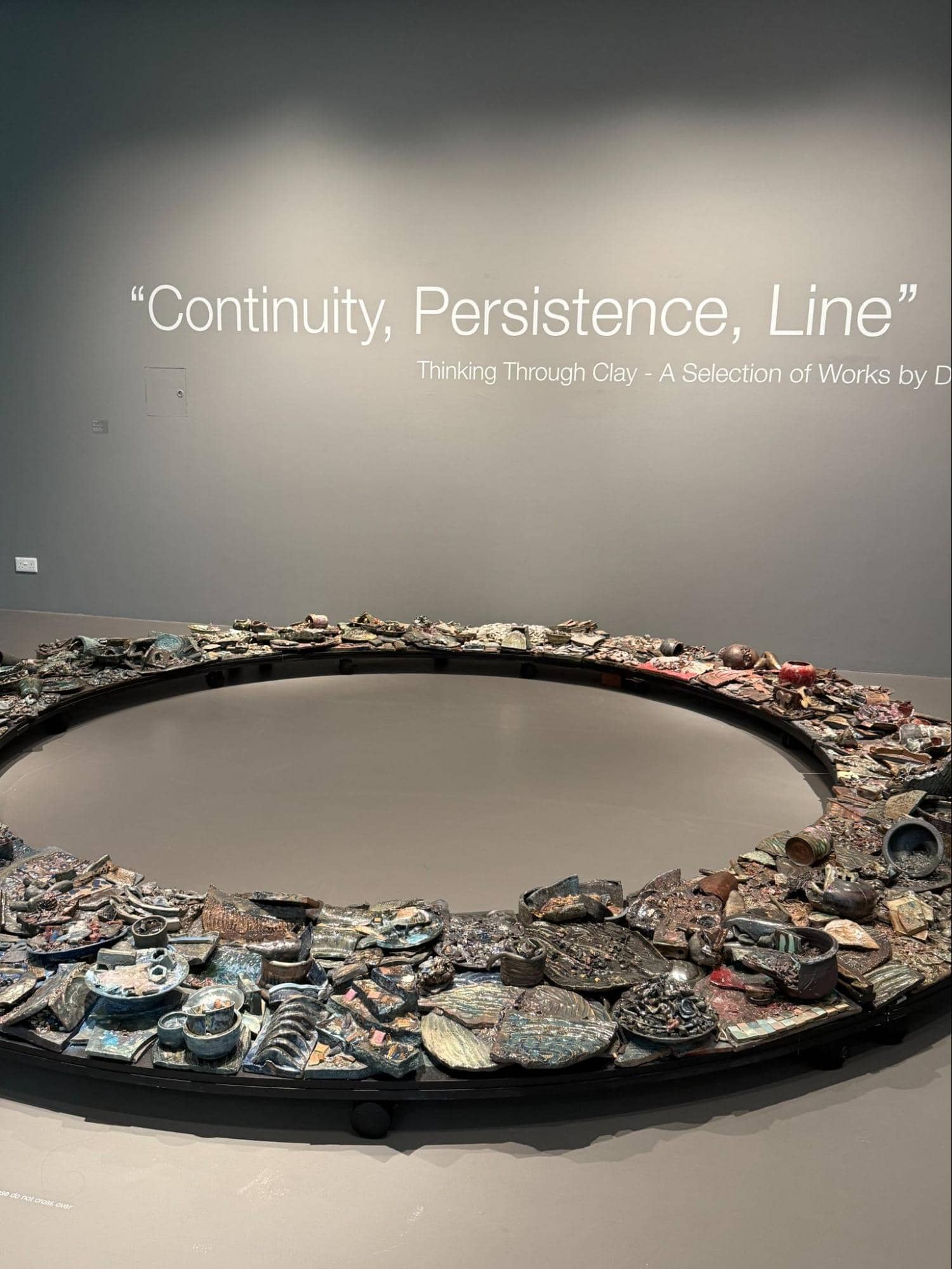
Gold Rush is an apt and bold start to Delia Prvački’s latest exhibition at the NUS Museum. Titled “Continuity, Persistence, Line” Thinking Through Clay — A Selection of Works by Delia Prvački, the exhibition is curated by Ling Jia Le and features ceramic works from the 1990s till the present day.
Ling explains that Gold Rush is made of fragments from Prvački’s past projects, some of which are also featured later in the exhibition. The work includes motifs like the cones from her Cornucopia series and stars from her Piece of Sky series. Those familiar with the Romanian-born Singaporean artist’s practice might also notice that the piece used to take another form, previously appearing under the name Rare Earths in a 2012 exhibition at Combinart Studio.
In an interview with curator Kenneth Tay, Prvački stated, “After I became a professionally practising artist, I decided that the movement of the pottery wheel was going to be my first source of inspiration for my artwork. I seek to translate that instance of the moving wheel, its action and aesthetics into a three-dimensional (3D) object.”
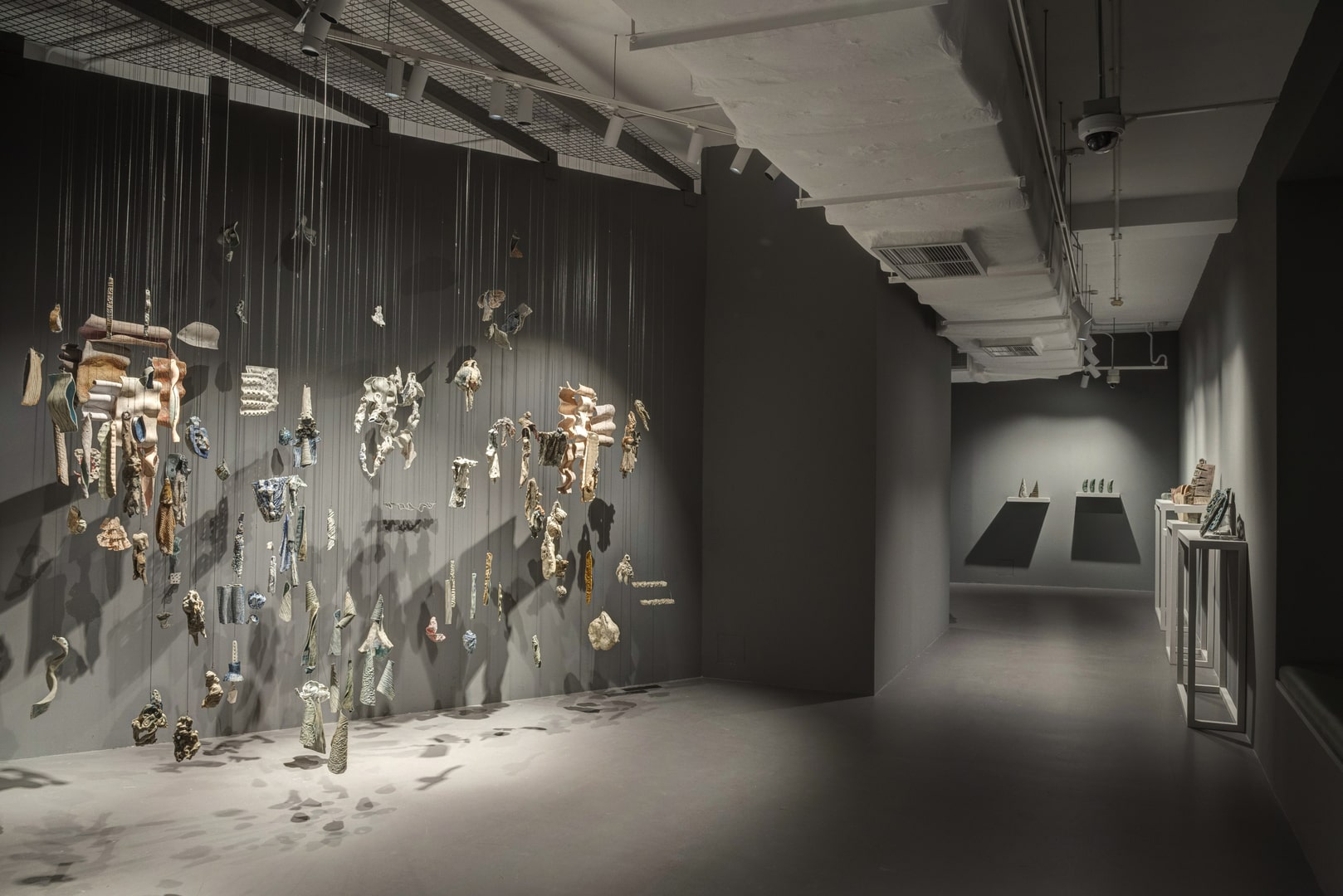
Like the endless swirl of a potter’s wheel, themes of transformation and cyclicity undergird Prvački’s practice in clay. Not only do her artworks, like Gold Rush, sometimes change across time, but she also returns repeatedly to natural motifs, imbuing them with new meanings. Ideas unfold and recur across her practice, sparking tacit, unexpected connections between seemingly unrelated works.
Lifted from Prvački’s 1982 poem “De Rerum Natura” (“On the Nature of Things”), which also acts as her artistic manifesto, the exhibition’s title thus picks up on the connective tissues that both bind and expand her extremely varied and prolific practice. Spatially, these connections unravel through three main sections of the show: The Search, The Unknown, and The Impulse, with viewers returning to The Search a second time as they leave the gallery.
The Search
We begin at The Search, which focuses on Prvački’s creative processes. Lining the corridor are stencils or maquettes (scale models sculptors use to draft larger pieces). Working iteratively, Prvački endows each clay piece with new textures, colours, and glazes, her process characterised by methodical, rigorous experimentation.
The range of test pieces on display testify to her commitment to pushing the boundaries of clay and creating new visual vocabularies to capture the world around her. Ling muses, “I have always found the imagery of stencils very interesting because they have an epistemological undertone to them. Using and creating stencils is akin to learning a language … a physical tool to assess and read the world.”
One of the works in The Search is Miner’s Hand, chosen for its visual parallel to Prvački’s artistic process: the unearthing of new visual languages through experimentation. The work was inspired by a news photograph of a hand, holding cosmic dust from a newly unearthed asteroid. Here, Prvački meshes the small and human and the colossal and cosmic in one sculptural scene — perhaps alluding also to the vast unknown universe she holds in her palms as a sculptor.
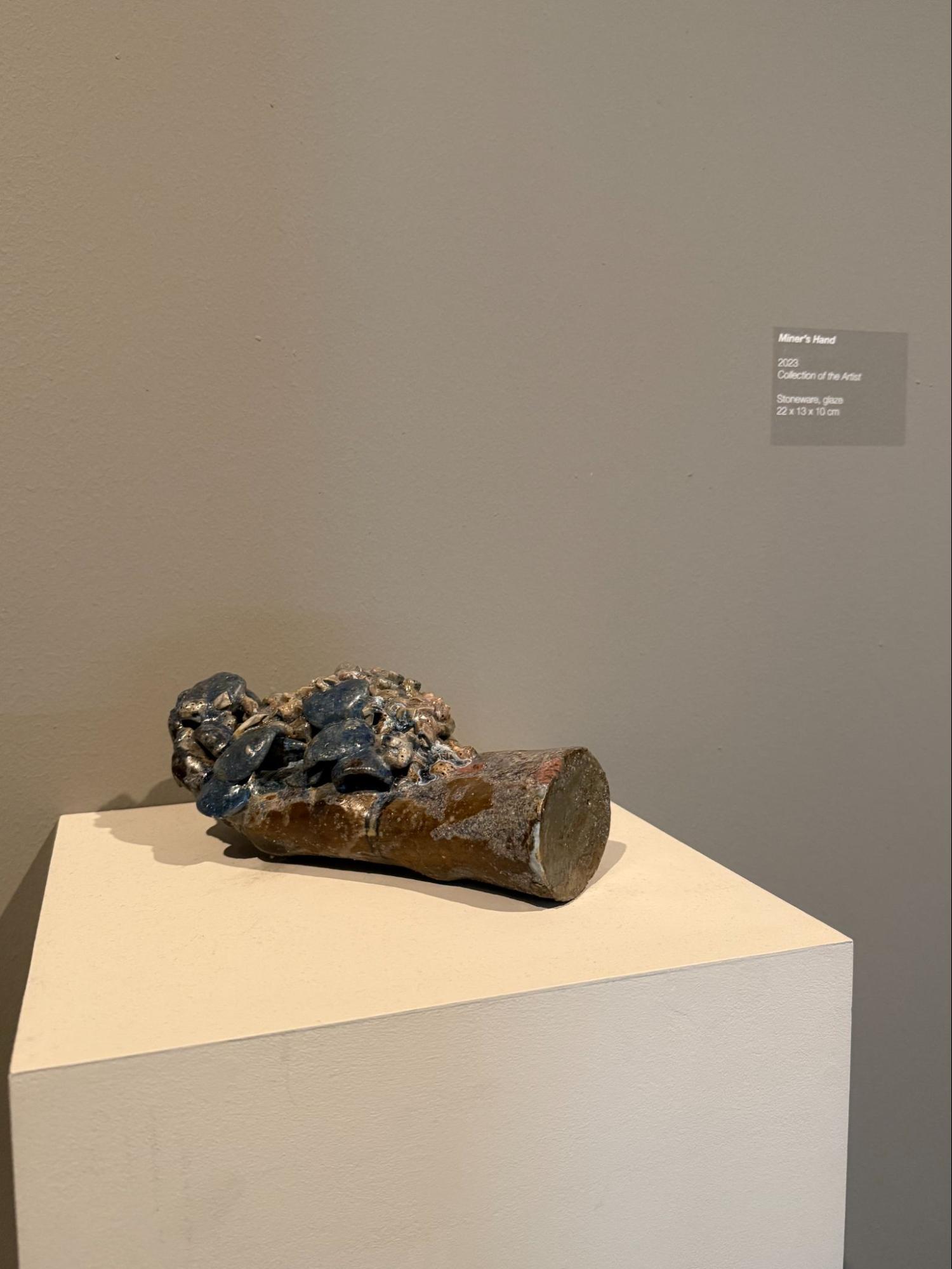
Next to Miner’s Hand is Pages from a notebook (2022–2023), which consists of test tiles from Prvački’s research with the NUS Institute of Functional Intelligent Materials. With the aim of creating novel composites that might give rise to new possibilities in ceramics and sculpting, the lab incorporated graphene oxide into Kaolin clay, resulting in a type of clay with a viscous consistency. In this series, Delia displays her technical mastery by making calculated explorations into different glazes and textures upon the new material. A spirit of discovery and spontaneity, rather than routine, guides her research, as she continually adds new test subjects into her “sketchbook” of ideas.
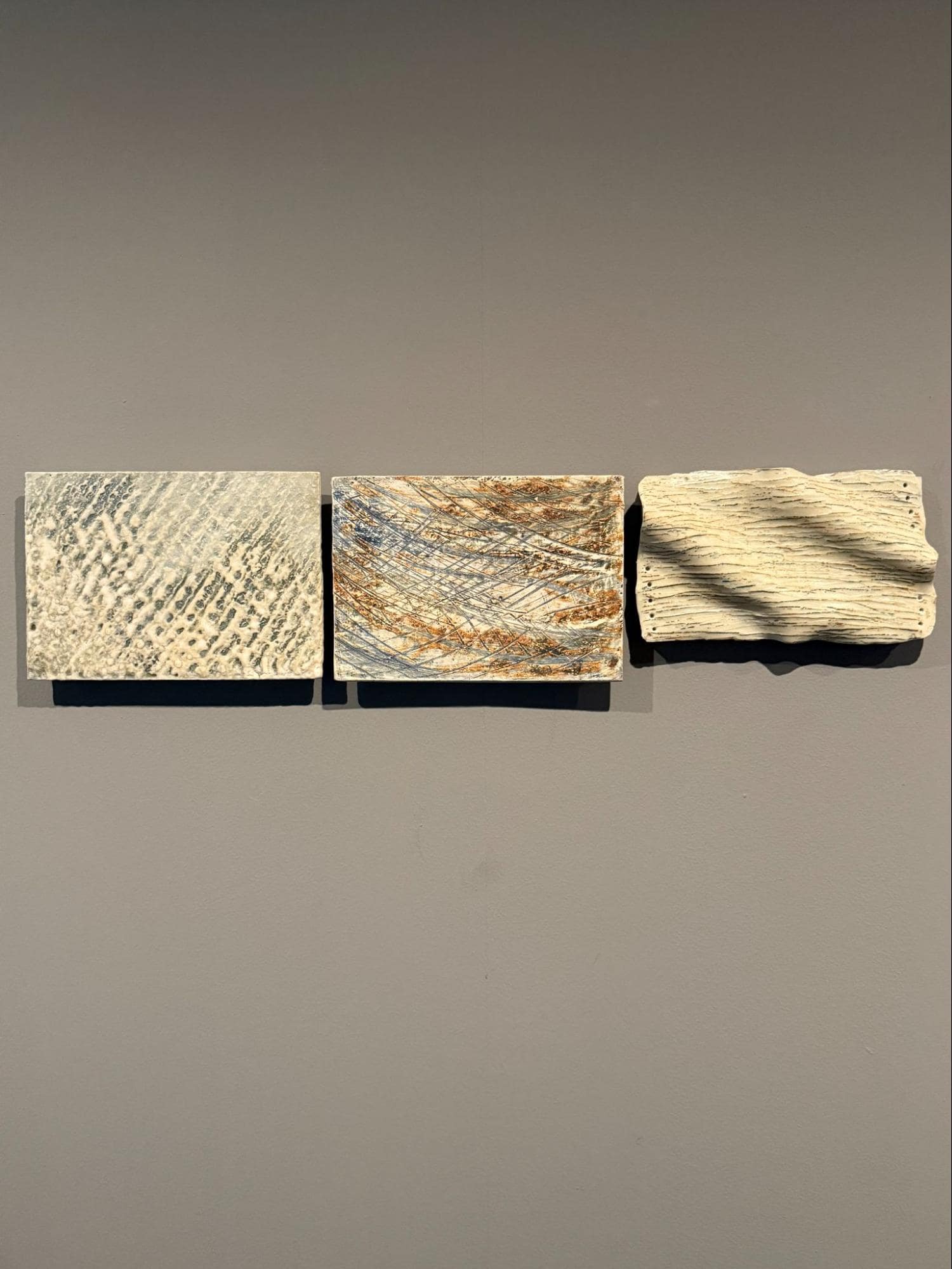
As I make my way through the space, it is honestly difficult to conceive that all the pieces on display are made of clay — such a simple and easily sourceable material. Another series of “sketches” glistens with the vibrant dewiness of watercolours on a palette, while a small pillowy structure with a white-and-blue motif appears in stark contrast to hardened gold emerging from a dark backdrop. Of note are two framed works hung side by side, featuring weavings from Prvački’s grandmother which the artist encased in a clay slip cast, glazed, and fired. The textiles themselves are now hidden from view, but what remains are memories and lineage near and dear to Prvački, embedded forever into clay.
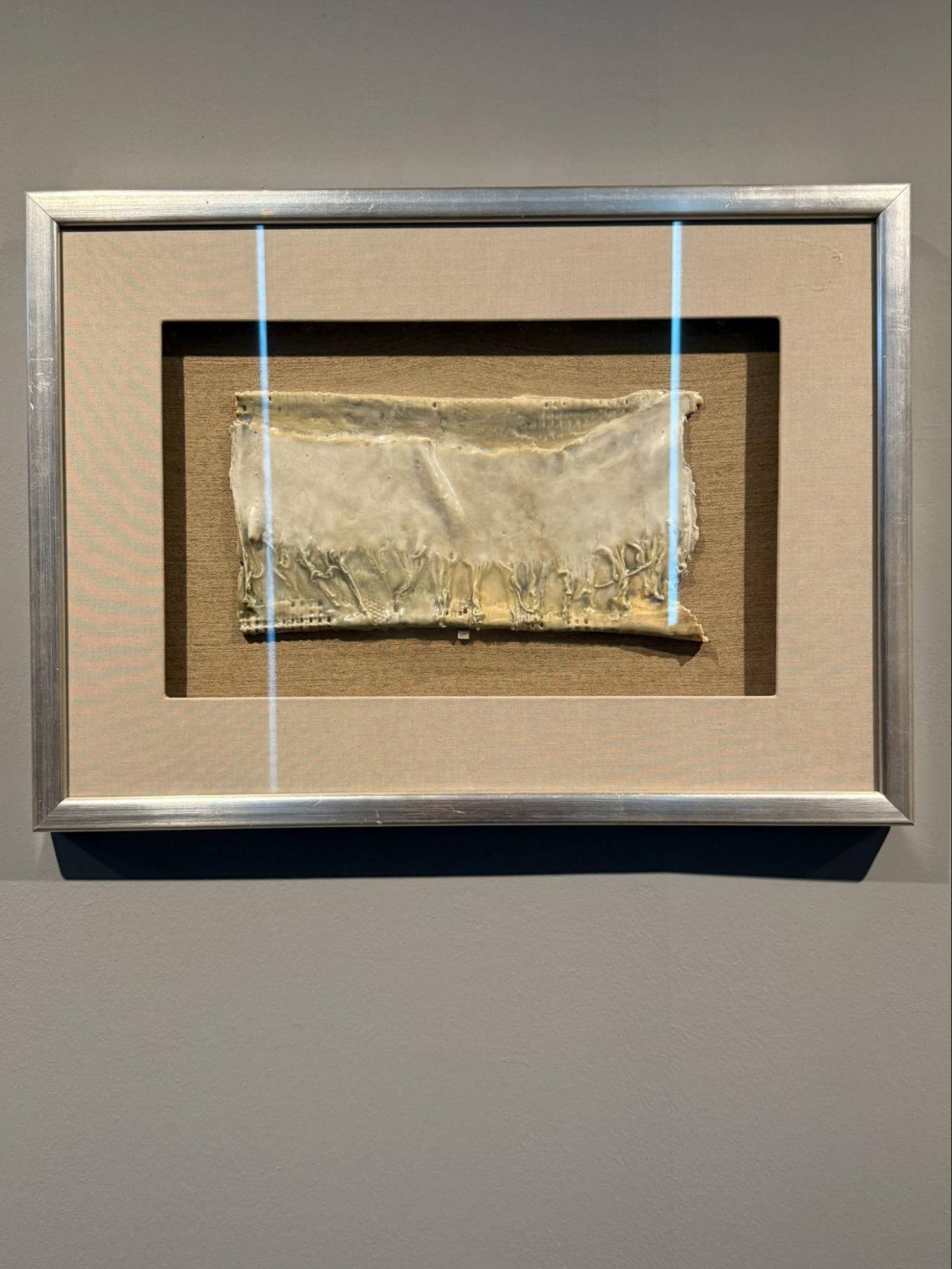
The Unknown
Slipping out of the corridor, we move seamlessly into a large open space: The Unknown. This section covers Prvački’s explorations of mining and the related themes of resource circulation, craftsmanship, geopolitics, capitalism, and the environment — preoccupations which also seep into the rest of her works in the gallery. These various conceptual threads are left open-ended for viewers to make their own connections and interpretations.
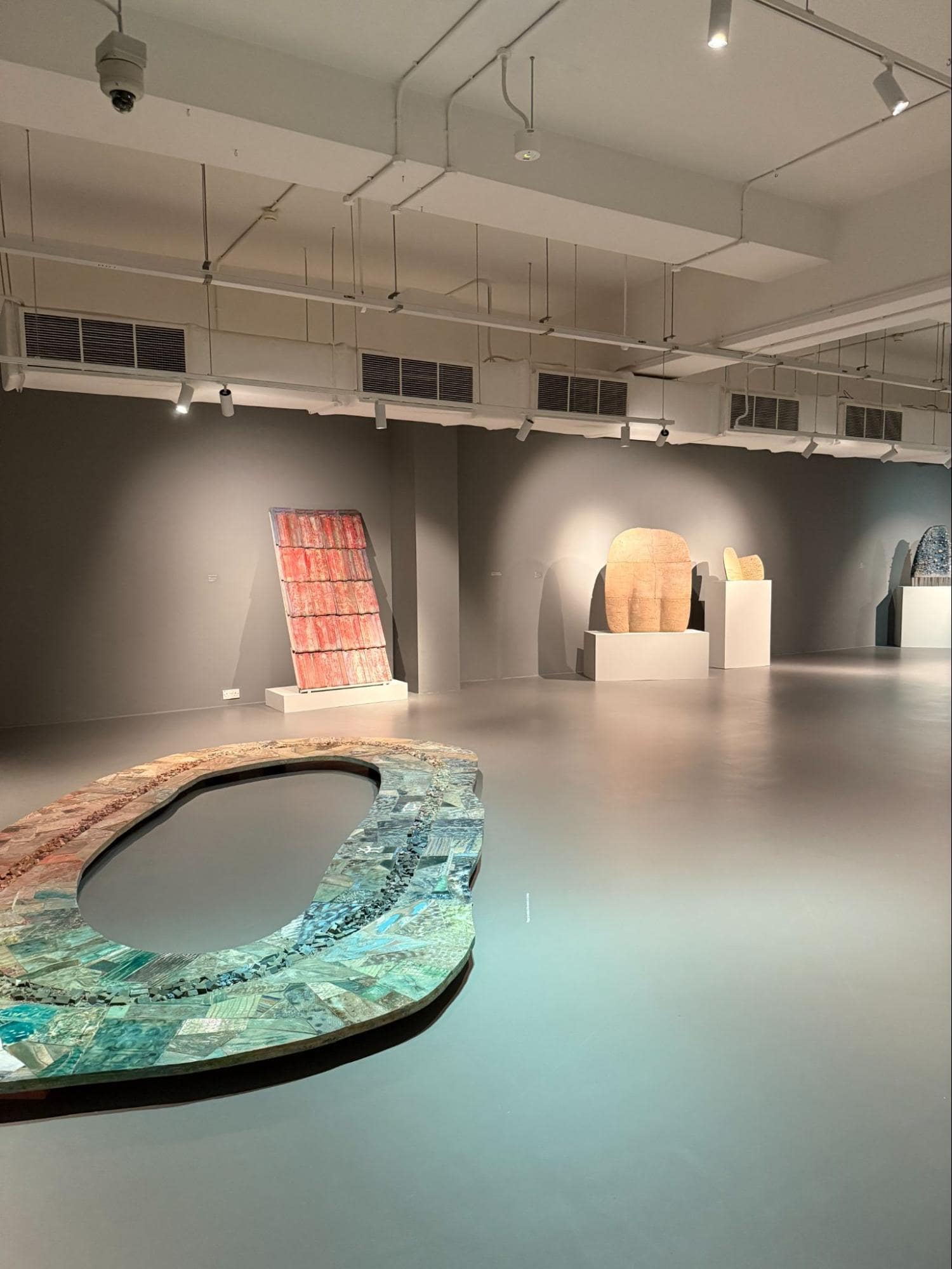
Personally, I read Prvački’s practice by tracing how her work moves from the tangible to the intangible and back again. For example, her focus on mining draws from a personal well: she grew up in Baia Mare in northern Romania, surrounded by mines and an abundance of geological resources. In an alchemical process, matter morphs into the impalpable; the physical reality of mine and earth connects to more abstract ideas such as nostalgia and memory. Prvački’s work as a ceramicist and sculptor then demands that these intangibles find form in an object again.
The work that best embodies this process is Piece of Sky. Enraptured by the night sky at Australia’s Kakadu National Park, Prvački sought to remember that ethereal moment through sculpture. However, as Ling points out, “What begins as personal experience [for Prvački] always extends into something broader.”
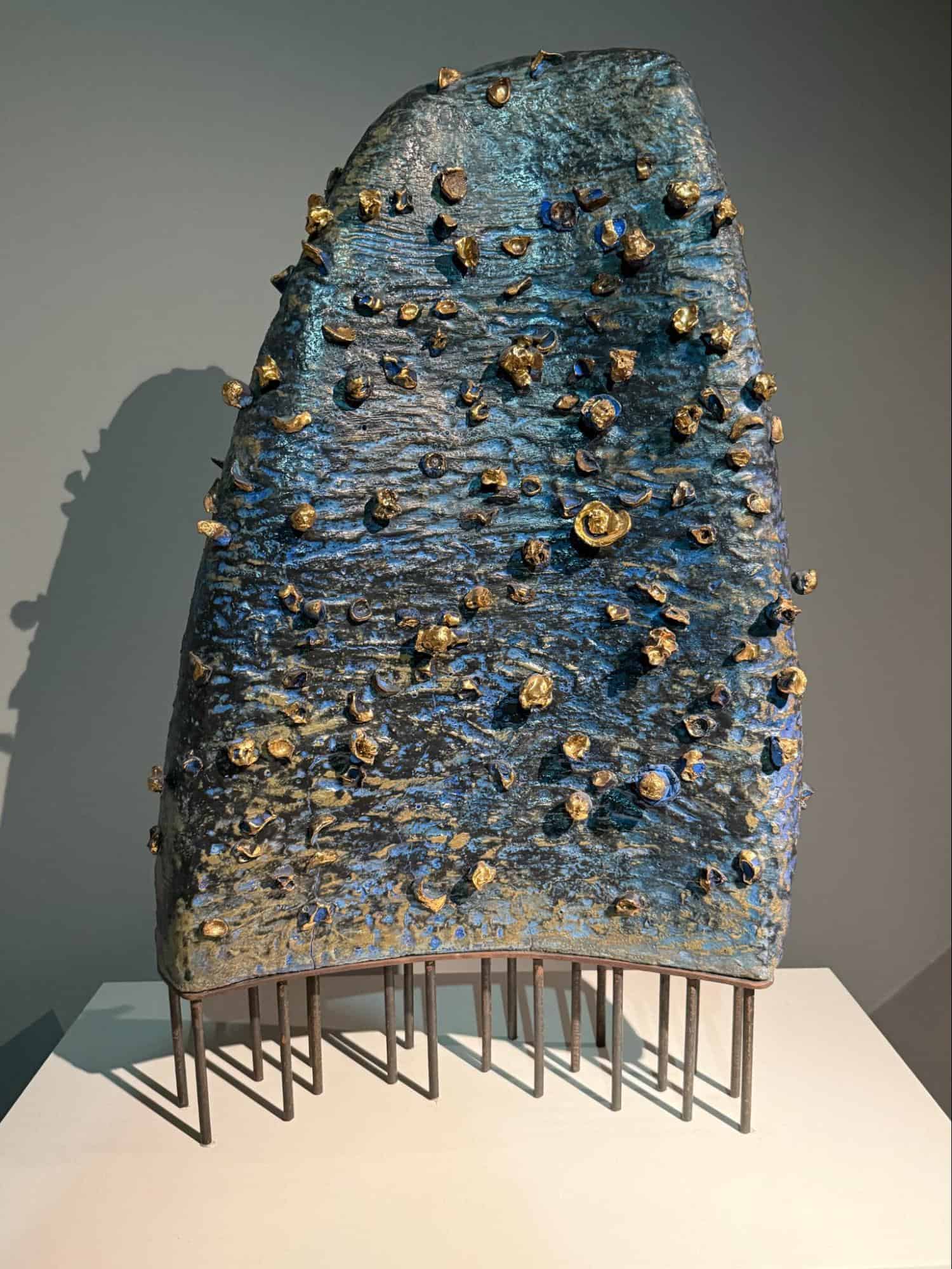
Here, the rippling and iridescent blue sky, gleaming with mesmerising pinches of gold, is rudely interrupted by a metal mount resembling scaffolding — as if reminding viewers of its crude reality as a “mere object.” This might suggest then that the sky, harnessed to make artwork, is inevitably objectified, drawing associations with recent capitalistic space conquests that attempt to exploit an abundantly free resource. Sky becomes object, becomes resource, and thus, a thing to mine.
In Weight of Ephemeral, red tiles lie propped against the wall, alluding to the slant of a roof. Swathes of bright red are layered onto the once-terracotta tiles, concealing blue stains beneath. Ling tells me that Prvački first glazed the tiles blue before staining them with a powdery pigment on a scrunched cloth, resulting in a smoky texture that seemingly hovers above the blue washes.
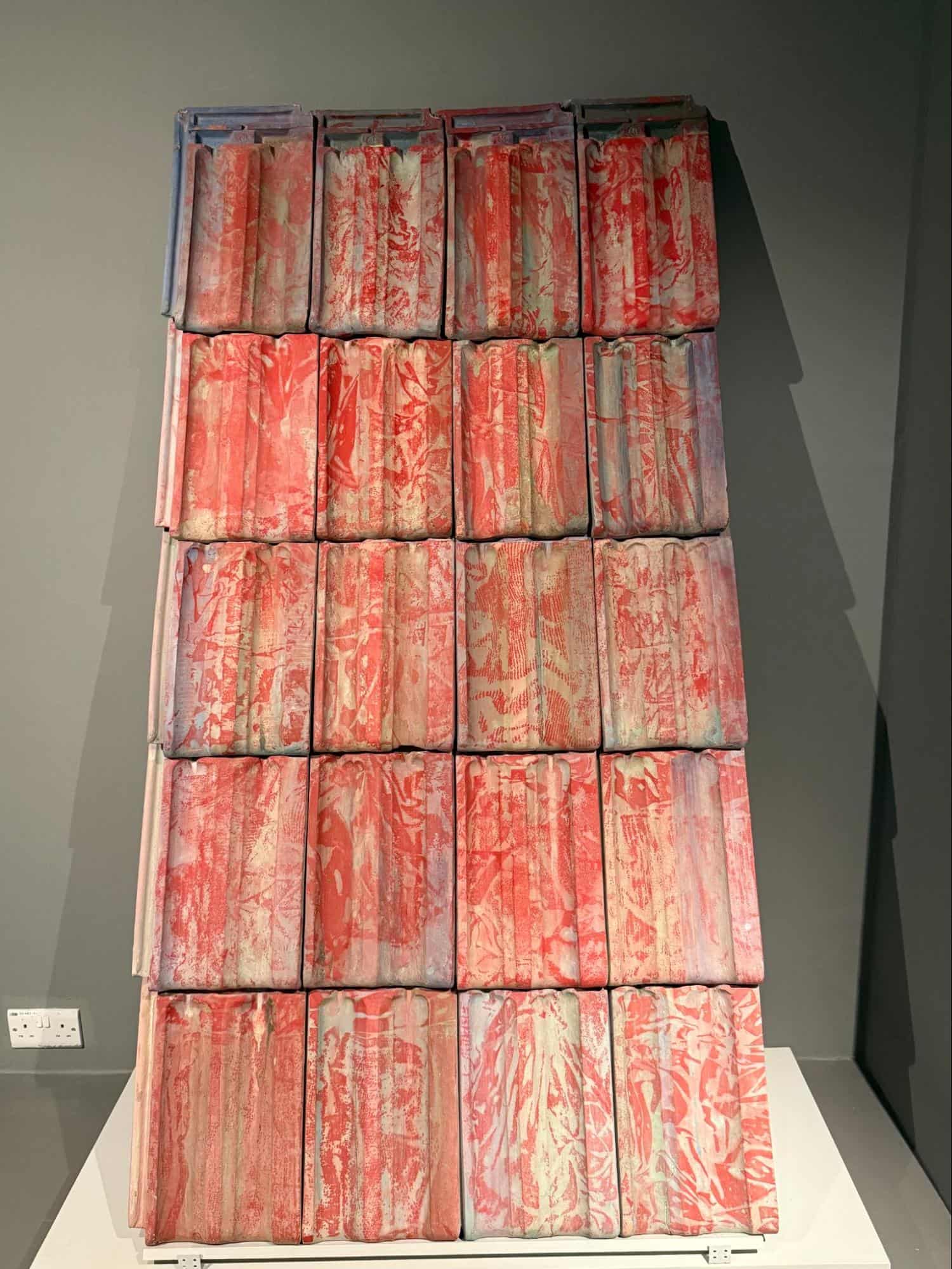
Weight of Ephemeral is an oxymoronic name for a conceptually dense work. Ling explains that these tiles are found objects from Prvački’s former home, and that a little peek at the back reveals the word “Madras” — the colonial term for the city of Chennai — inscribed into the tiles.
Transforming these tiles into an artwork, Prvački attempts to describe the unseen, drawing connections to the colonial spice trade and accompanying import of construction materials in the 1800s. It is a subtle attempt at juxtaposition, between weight and lightness, labour and leisure. As Ling summarises: “Hence, the title Weight of Ephemeral, because she was trying to capture with something concrete the ephemeral fragrance associated with spices, as well as related stories and materialities that are not so obvious.”
The Impulse
The Impulse is located in a more intimate section of the gallery. Paring Prvački’s practice down to its philosophical core, the four works in this section relate to central experiences and literary influences in her life, reaching beyond their physical confines to express lofty, abstract ideas.
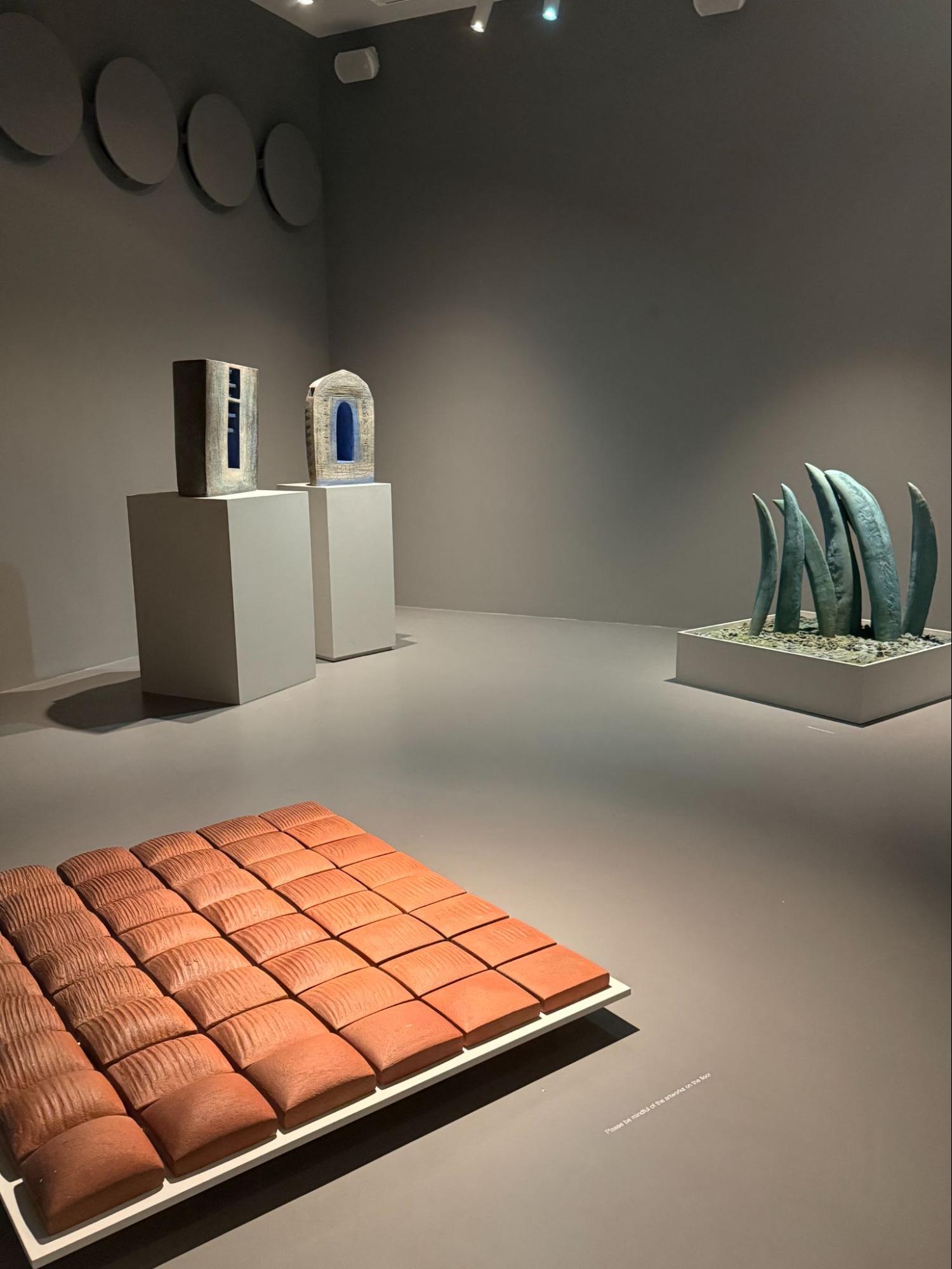
Facing each other, Blades of Grass and Ageing speak to two universal concepts respectively: life and time. The former — for which a maquette can be found in the earlier section The Search — is inspired by Walt Whitman’s poetry collection Leaves of Grass, which expresses the American writer’s philosophy of life.
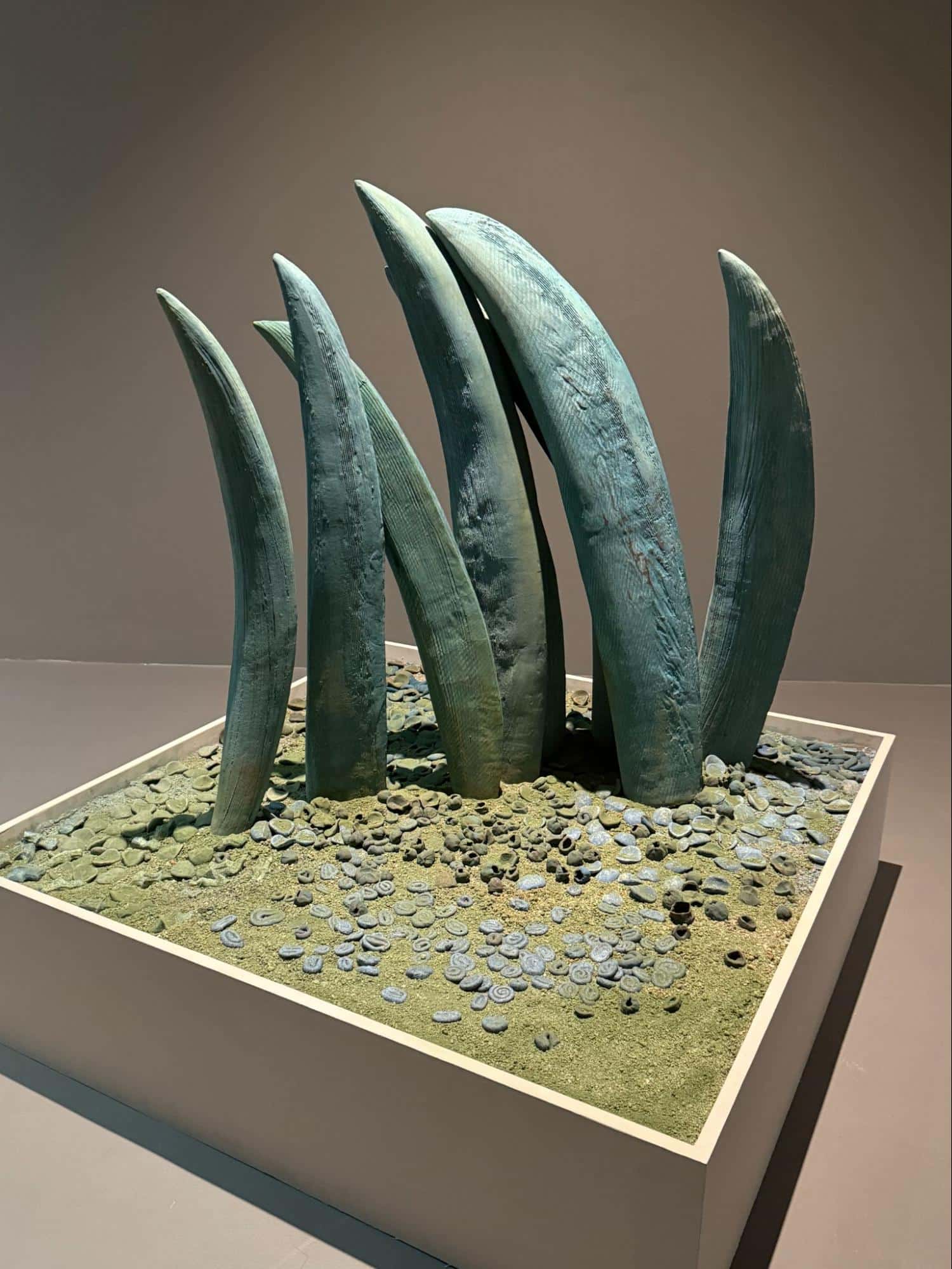
Like Whitman, Prvački endeavours to say something true about the immensity of life. By magnifying mere blades of grass, she draws the viewer’s attention to the simple yet surprising beauty of the everyday, natural world.
Ling invites me to walk around Ageing — a square set of 48 terracotta loaves arranged to form gradations of texture, shape, and colour — and observe how the static work somehow fluidly morphs as I do so. The work was created when Prvački was 48 years old, with each loaf representing a year of her life. The soft, subtly varied loaves suggest the changes we all experience in life, and our subordination to greater forces that move and shape us.
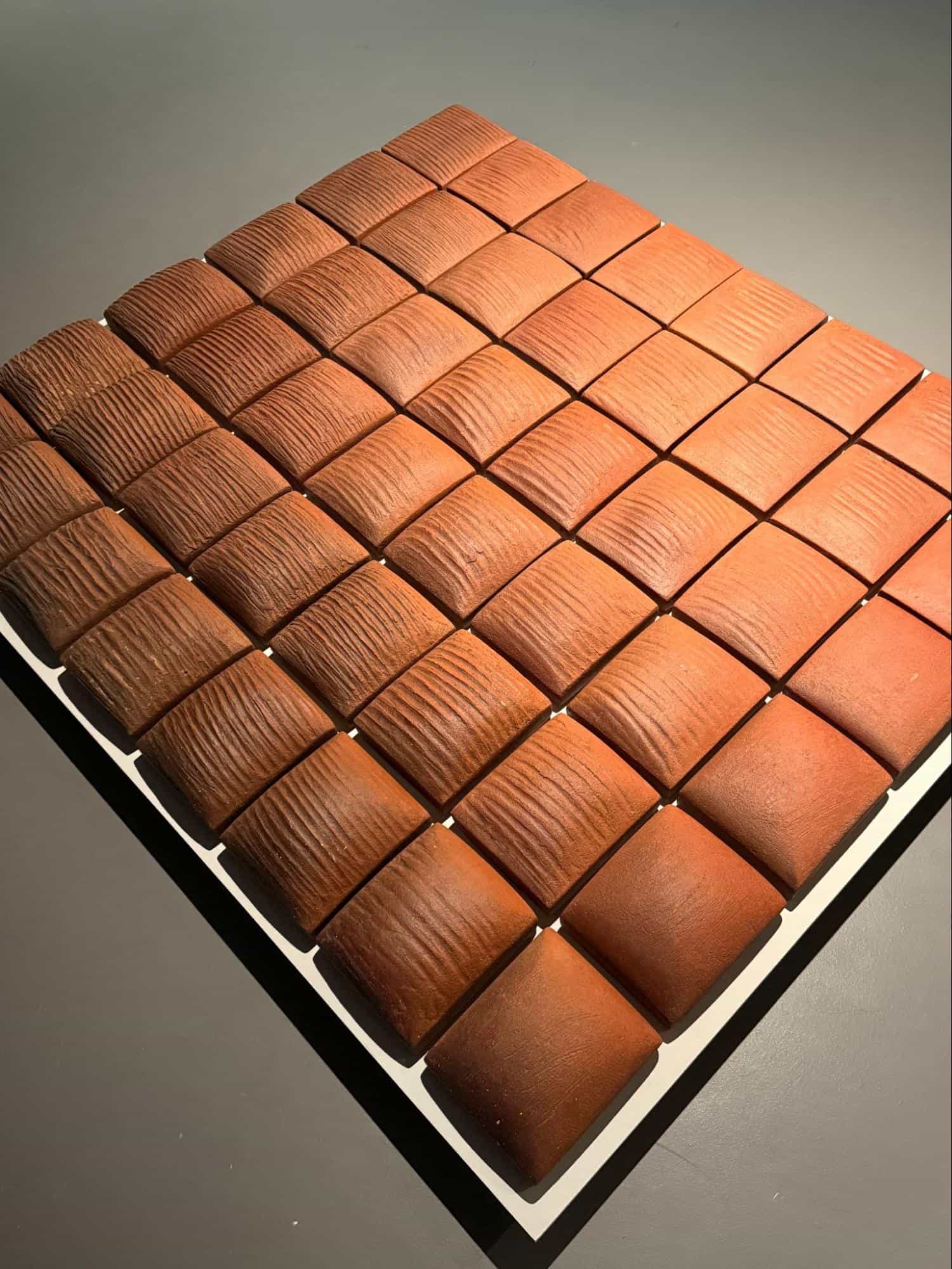
Continuity, Persistence, Line
We finish at The Search. But for Prvački, her process continues as she reduces her works into fragments or test pieces again in order to forge new paths in her craft. Coming back to this first section, I find myself similarly nudged towards a re-reading of the maquettes through new lenses, my thoughts freshly informed by my experience of the other sections.
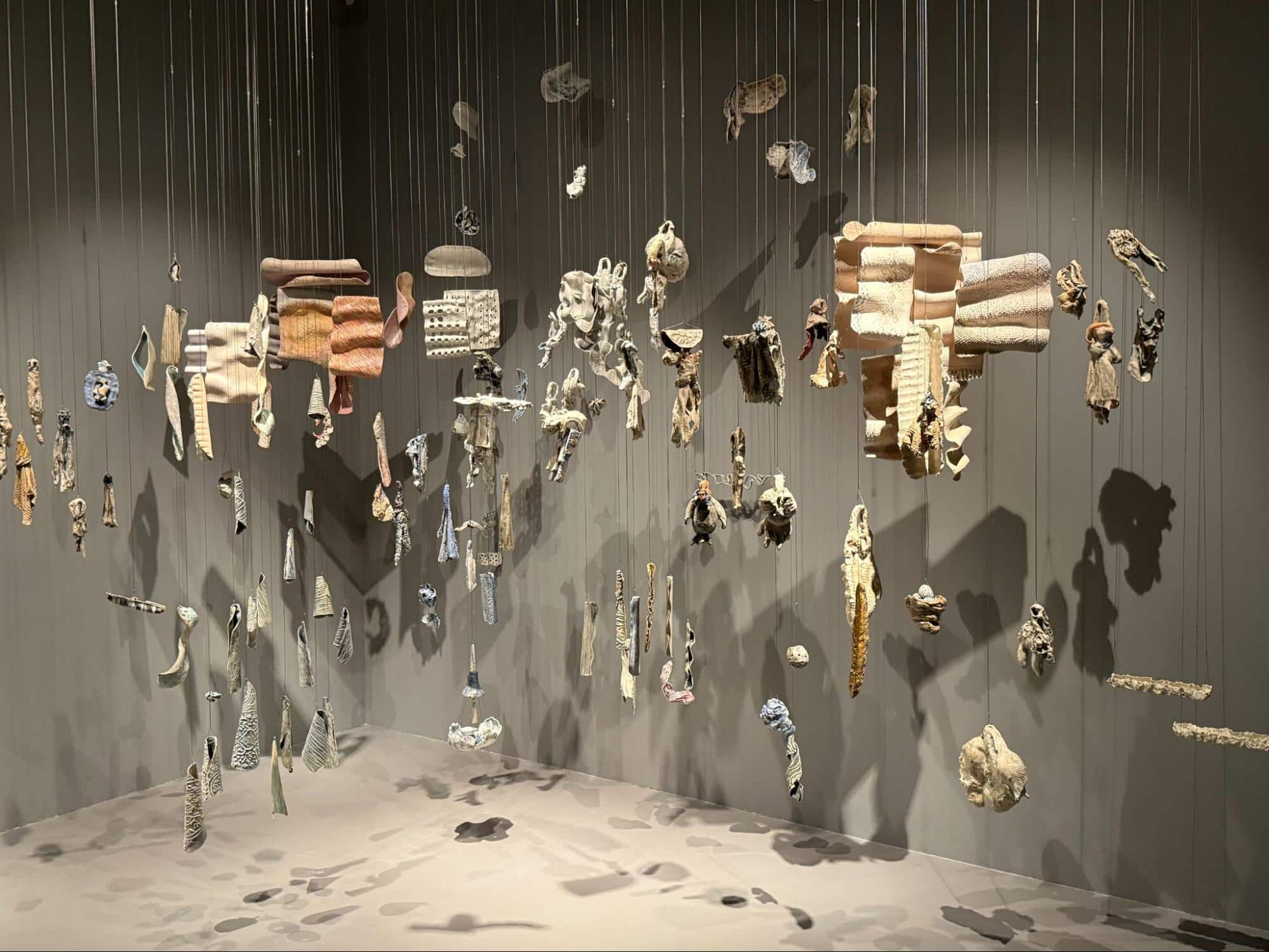
Spirits marks the end of my visit, and is also a fitting culmination of Prvački’s endeavours. Suspended in mid-air are a number of curiously but deftly wrought objects, made using clay leftover from her graphene oxide experiments with the aforementioned NUS Institute. Floating, they seem trapped in time — if only in this moment and for the viewer’s benefit, before Prvački might reassemble them into some other new creation. One can read Spirits as a glossary of sorts, picking out and classifying motifs from across her practice.
Rather than existing in rigid categories, however, the objects are presented in a way that highlights their animistic qualities. Viewers can imagine their arrangement as a dialogue or even an image of kinship. Spirits is a work that reflects Prvački’s expansive practice, and an appropriate endcap for an exhibition with an equally ambitious undertaking — a world of its own, connecting everything through a continuous, persistent line.
___________________________________
“Continuity, Persistence, Line” Thinking Through Clay — A Selection of Works by Delia Prvački runs at the NUS Museum until 30 August 2025. Find out more at museum.nus.edu.sg.
Header image: Delia Prvački in her studio in 2024. Image courtesy of NUS Museum.
Support our work on Patreon
Become a memberYou might also like
8 Ceramic Talents You’ll Find at Singapore Clay Festival 2025
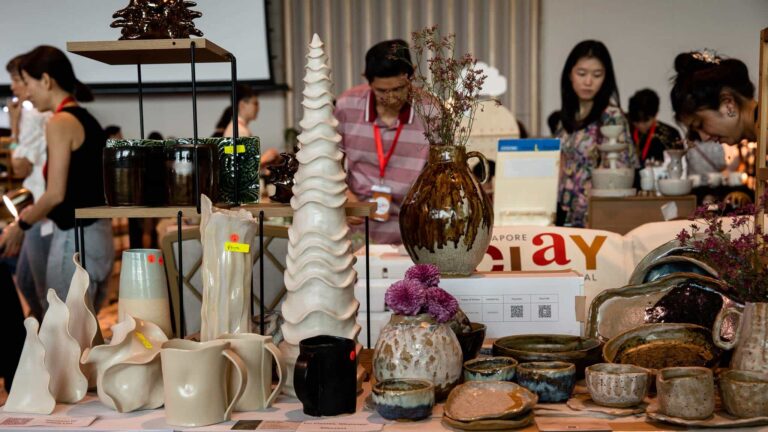
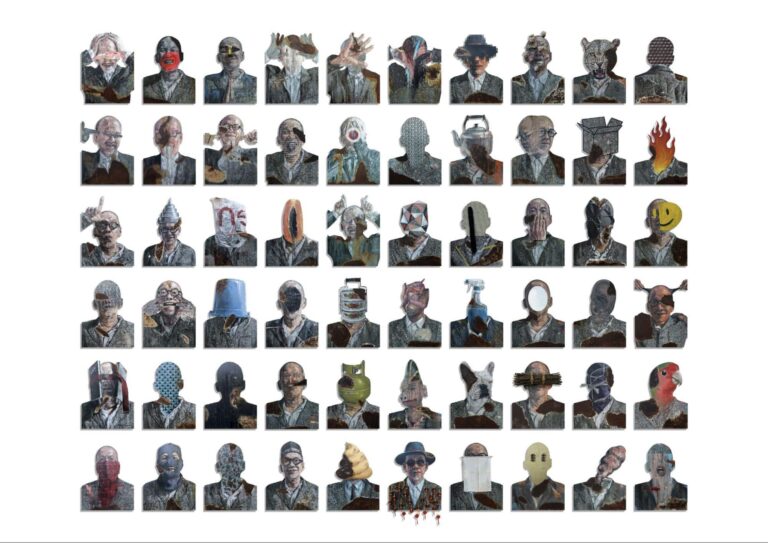
How I Spent Seoul Art Week (Beyond the Fairs)
